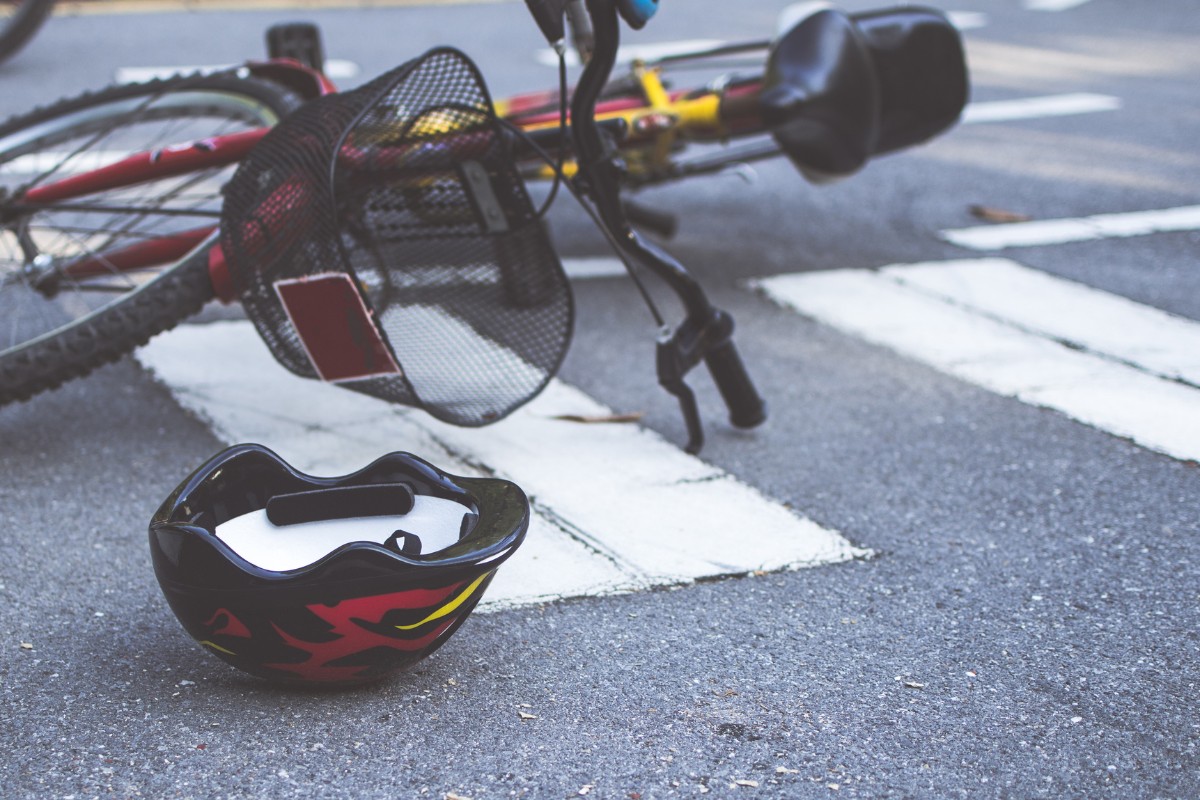
Peachtree Corners is home to several cycling groups and more than 100 miles of off-road bicycle paths, making it one of the most bike-friendly communities in Georgia. However, bicycle accidents remain all too common here and are often caused by the carelessness of car drivers, truckers, and other road users.
If you were hurt in a bicycle accident someone else caused, you shouldn’t have to bear the financial burden of your injuries and other losses. At Brauns Law Accident Injury Lawyers, PC, we can help you pursue the compensation you deserve from the at-fault party. Contact our Peachtree Corners bicycle accident lawyers today for a free initial consultation and learn more about your options for pursuing justice.
Common Types of Bicycle Accidents in Peachtree Corners, Georgia
Bicycle crashes often occur when motorists do not watch for or yield to cyclists when appropriate. Common types of bicycle accidents that negligent drivers cause include the following:
- Left- or right-cross accidents – A left- or right-cross accident occurs when a driver preparing to turn at an intersection doesn’t see an approaching cyclist and turns directly into the side of the bike.
- Right-hook accidents – In a right-hook accident, a motorist following behind or alongside a bicycle tries and fails to make a right-hand turn in front of the cyclist. When motorists don’t create enough distance before turning in front of oncoming cyclists, they might collide with them.
- Rear-end collisions – Rear-end collisions happen when the front end of a vehicle crashes into the rear end of a bicycle or vice versa.
- Backing-up accidents – A backing-up accident is when a driver doesn’t check their blind spots before backing out of a driveway, garage, or parking spot and reverses straight into an oncoming cyclist.
- Dooring accidents – Dooring accidents occur when people in parked vehicles open their doors straight into the paths of oncoming cyclists.
Common Causes of Bicycle Accidents in Peachtree Corners, GA
Bicycle accidents are frequently more devastating than other types of traffic collisions. But bike wrecks occur for many of the same reasons as other accidents. Common causes of bicycle accidents include:
- Driver distraction – Motorists who are absorbed in text messages, phone calls, or other distractions are prone to overlooking and colliding with cyclists in traffic.
- Driver impairment – Drivers under the influence of alcohol or drugs have trouble with visual focus, depth perception, and reaction time. They are unlikely to notice nearby cyclists or act quickly enough to prevent bicycle accidents.
- Driver fatigue – Extreme drowsiness is just as dangerous as intoxication. Tired drivers often cause bicycle accidents when they’re bleary-eyed or nodding off at the wheel.
- Aggressive driving – Aggressive drivers who blow through stop signs, exceed safe speeds, or follow too closely can easily harm or kill cyclists on the road.
- Driving errors – Inexperienced, confused, or careless motorists often commit dangerous driving errors that contribute to bicycle accidents, such as failure to yield or signal intent.
- Mechanical defects – Drivers of vehicles with mechanical defects due to manufacturing defects or poor maintenance are more likely to lose control while driving, increasing the risk of causing bicycle accidents.
Common Injuries Caused by Bicycle Accidents in Peachtree Corners
Bicyclists can suffer catastrophic injuries in accidents because they have little protection against the violent energy of collisions with heavy vehicles. Even cyclists who wear helmets are susceptible to the following types of injuries in a bicycle accident:
- Head injuries
- Facial and dental injuries
- Back and neck injuries
- Abdominal and internal injuries
- Dislocated or broken bones
- Bruises, lacerations, and puncture wounds
- Soft tissue strains, sprains, and tears
- “Road rash” and other burn injuries
- Permanent scarring and disfigurement
- Amputation and loss of limb
- Spinal cord injuries (SCIs)
- Partial or total paralysis
- Traumatic brain injuries (TBIs)
- Post-traumatic stress disorder (PTSD)
Georgia Bicycle Laws
Georgia legally classifies bicycles as vehicles, meaning bike riders are subject to the same rights and restrictions that apply to motorists. But because cyclists are substantially more vulnerable on the road than motorists, Georgia law provides extra protections and regulations to safeguard those on bikes, such as:
- C.G.A. § 40-6-55 – Motor vehicle operators must yield to cyclists in bicycle lanes.
- C.G.A. § 40-6-56 – Drivers must give cyclists on the road at least three feet of space at all times.
- C.G.A. § 40-6-144 – Except in localities that allow bicycles on sidewalks, cyclists shall not ride on sidewalks or sidewalk areas.
- C.G.A. § 40-6-291 – Cyclists may, but are not required to, ride on paved road shoulders. Also, cyclists may signal right-hand turns by extending the right arm and hand horizontally or the left hand and arm upward.
- C.G.A. § 40-6-292 – Cyclists and passengers shall only ride on permanently attached bicycle seats and must not ride on handlebars. Operators may not use bicycles to transport more people than their bicycles are designed to carry. When carrying infants or children between the ages of one and four, they must securely seat their children in infant slings, child seats, or bicycle trailers.
- C.G.A. § 40-6-293 – Bicyclists shall not attach themselves or their bicycles to any moving vehicle on the roadway.
- C.G.A. § 40-6-294 – When on roadways, cyclists shall ride as close to the right-hand side of the road as possible. Exceptions include when turning left, avoiding road hazards or traffic, matching the speed of traffic, passing another vehicle, or avoiding a right-turn-only lane when not turning right. Cyclists may not ride more than two abreast, except on roads exclusively for bicycles. In designated bicycle lanes, they must ride in the same direction as vehicle traffic on the roadway.
- C.G.A. § 40-6-295 – Cyclists shall not carry anything that prevents them from keeping at least one hand on the handlebars at all times.
- C.G.A. § 40-6-296 – At night, bicycles must have white headlights and red tail lights or reflectors visible from 300 feet away. Bikes also must have functioning brakes and handlebars that do not force the rider to raise their hands above the shoulders during operation. Cyclists and passengers under 16 must wear protective helmets while riding on public roads.
Filing a Personal Injury Claim After a Bike Accident
If you were injured by a motorist while riding your bicycle in Peachtree Corners, you could have grounds for a claim against their auto liability insurance. But before seeking compensation for your injuries and other losses, you and your attorney must prepare a valid claim with supporting evidence.
Here are some steps you can take in the aftermath of a bike crash to lay a strong foundation for your injury claim:
- Go to the doctor as soon as possible for an official diagnosis and care plan.
- Follow your doctor’s care plan, go to all follow-up appointments, and keep a “pain journal” to record your recovery.
- Gather evidence from the accident, including photos of the scene, other parties’ contact details, and eyewitness statements.
- Hang on to hospital bills, proof of lost income, bicycle repair estimates, and other documentation of crash-related financial losses.
- Do not speak to insurance companies or third parties about your case before discussing the situation with an attorney.
- Avoid sharing photos or information on social media about the bicycle accident while your claim is pending.
- Contact a knowledgeable bicycle accident lawyer in Peachtree Corners for guidance.
What Damages Can I Recover With the Help of a Bicycle Accident Lawyer?
With the help of an experienced bike accident lawyer, you can build a strong case and pursue maximum compensation. You could be compensated for the following losses:
- Past and future medical expenses you incur due to the bicycle accident
- Incidental expenses, such as travel costs for medical appointments
- Lost income due to missed time at work
- Expected losses in future earning capacity, if you suffer permanent injuries
- Subjective losses, including your pain, suffering, and lost quality of life
- The costs of repairing or replacing your damaged bicycle or other personal property













